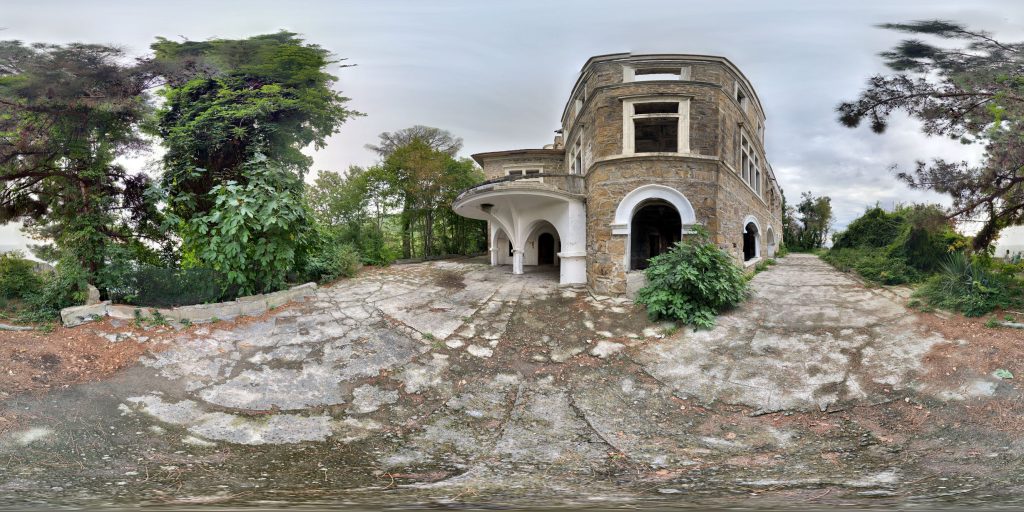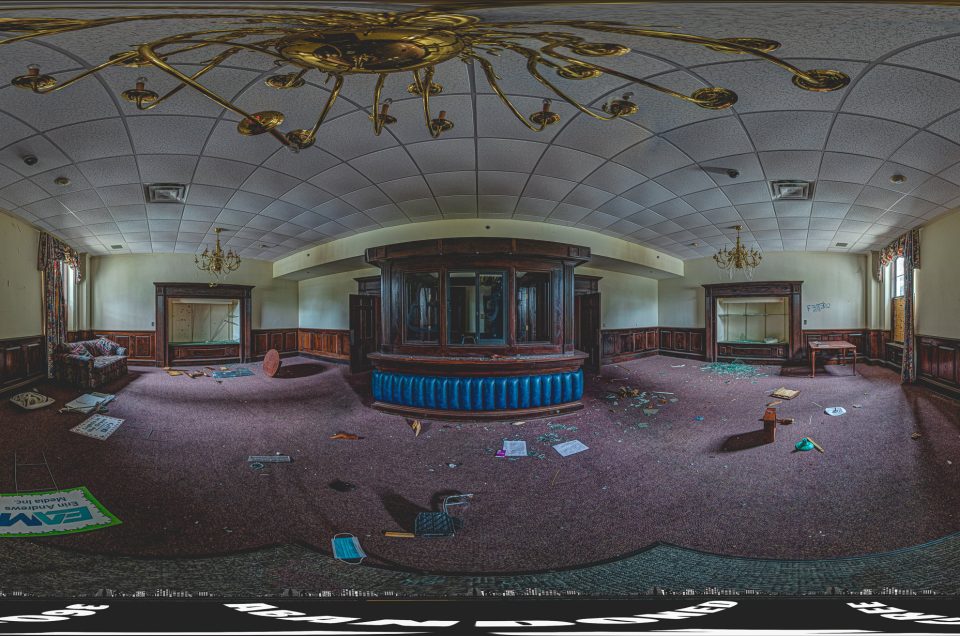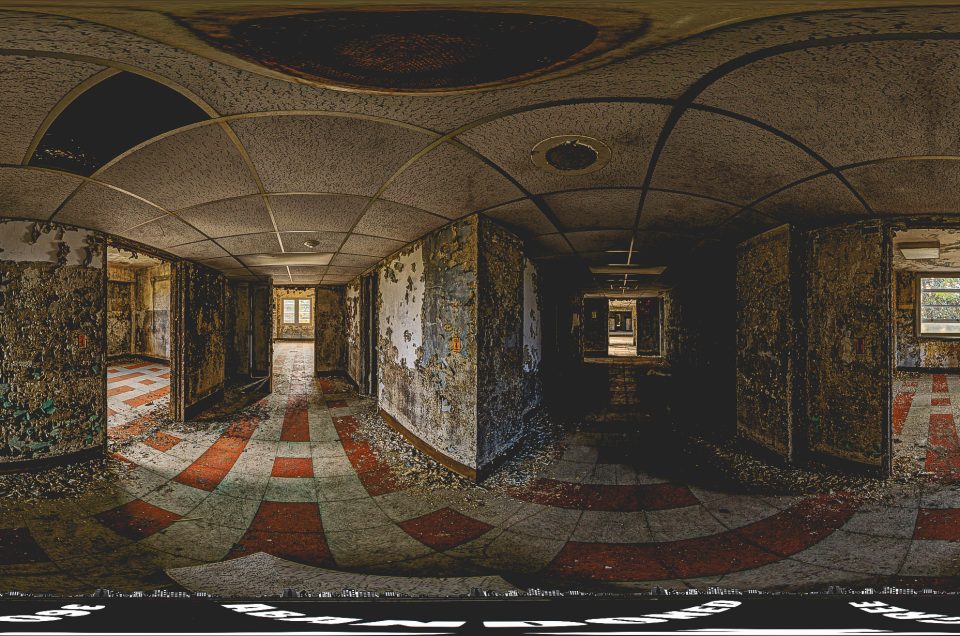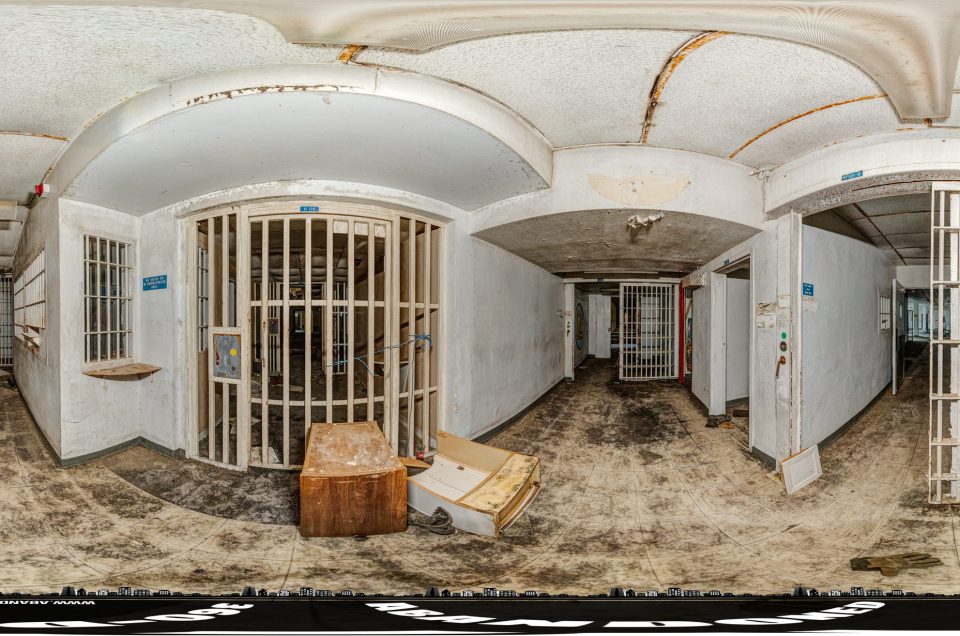Colonel Kvitko’s Dacha: The Abandoned Sochi Mansion Shrouded in Legend
Discover the haunting remains of Colonel Kvitko’s dacha, an intriguing relic of the past that continues to captivate urban explorers. The crumbling structure and surrounding decay offer a compelling glimpse into history, now vividly brought to life through an immersive 360-degree panoramic image.
Experience Colonel Kvitko’s dacha from every angle with the interactive panorama available below via Google Maps Street View. This visual journey transports you directly to the ruins, offering a detailed exploration of the dacha’s mysterious atmosphere and forgotten beauty.
Image by: Павел Ахромеев
Image by: Sova
Image by: Павел Ахромеев
Colonel Kvitko’s dacha stands in ruin on a cliffside in Sochi, Russia, its grand stone arches and empty window frames peering over the Black Sea. Once a luxurious seaside villa, this abandoned Russian mansion has become an alluring destination for history buffs and adventurous urban explorers. Known to locals as a “house with ghosts,” the site is steeped in eerie legends and historical significance. In this article, we’ll journey through the dacha’s past – from its construction in imperial times to its Soviet-era uses, and finally to the decades of neglect that have made it a must-visit for urban exploring in Russia. Along the way, we’ll discover when Colonel Kvitko’s dacha was built, how it was used, why it was abandoned, and what mysterious stories still echo within its crumbling walls.
A Castle by the Black Sea: Origins of Colonel Kvitko’s Dacha
The story of Colonel Kvitko’s dacha begins in the early 20th century with Andrey Valerianovich Kvitko, a wealthy tsarist military officer. Colonel Kvitko came from a noble Cossack family in Kharkov and enjoyed a successful career in the Russian Imperial Gendarmerie. According to local history, he was a decorated veteran of the Russo-Turkish War, known for his bravery – and a bit of daredevil spirit. One colorful anecdote recalls how he once wagered he could jump his horse over a dinner table full of generals – a stunt he pulled off successfully, but which abruptly ended his military career in early retirement. Kvitko didn’t languish in disappointment for long. Instead, he embarked on travels in Italy, where fate introduced him to Vera Dmitrievna Martynova, the woman who would become his wife.
Vera Martynova was an aristocratic lady of considerable means – Italian by upbringing and from a well-to-do family. In fact, Vera owned two grand castles in Italy, including a 40-room castle with a splendid garden near Rome’s Porta Pia. She adored the romantic architecture of European castles. After marrying Kvitko (who himself “never needed anything” growing up in a rich family), Vera had one request: she wanted a villa on the Black Sea coast of Russia, and not just any villa, but a replica of an Italian castle she had admired on the Mediterranean shore. The colonel, eager to please his bride, agreed to this extravagant whim.
Around 1905, Kvitko acquired a 13-hectare parcel of scenic land in the Khosta area of Sochi, near the forested slopes of Mount Maly Akhun. There, construction of the new mansion began, aiming to bring a slice of Italian Renaissance flair to southern Russia. By 1916, the dacha was completed, standing as a majestic cliffside palace overlooking the Black Sea. In fact, it was said to be an exact smaller-scale copy of one of Vera’s beloved Italian family mansions – identical in style but only about one-third the size.
Architecturally, Colonel Kvitko’s dacha resembled a medieval castle in miniature. The elegant yet imposing structure featured thick gray stone walls and tall crenelated towers, evoking a fortress-like presence. There were round turrets and balconies, arched windows, and spiral staircases, all crafted to mirror Old World European castles. The design is commonly attributed to Alexey Yakovlevich Budkin, a notable Sochi architect of the time, though archival records are sparse and the original blueprints haven’t survived. Inside, the villa was lavishly appointed (as one would expect from a colonel’s estate), with grand halls and fine finishes – a private seaside paradise for the Kvitko family.
A Brief Golden Age: Luxury Living and Famous Guests
Although the estate was built as a summer residence for Colonel Kvitko and his wife, the couple enjoyed their Black Sea castle only for a fleeting moment in history. From its completion in 1916 until late 1917, the dacha hosted glittering gatherings and gave a glimpse of imperial Russian high society on the Sochi coast. Local lore and historical accounts mention that the Kvitkos welcomed numerous distinguished guests to their new home. Prince Golitsyn, a member of one of Russia’s most aristocratic families, paid visits. World-renowned opera singer Feodor Chaliapin strolled its halls and likely sang within its acoustically rich chambers. Famed romance ballad singer Nadezhda Plevitskaya also graced the estate with her presence. There is even a rumor – almost certainly apocryphal – that a young Joseph Stalin once dropped by the dacha as a guest during his early revolutionary days. Whether or not Stalin truly visited, these tales underline the dacha’s status as a social hub for the elite, albeit for a very short time.
Neighbors and old-timers recalled the stylish figure Vera Martynova cut during those years: she would promenade through the gardens in a big white hat with an enormous bow, often accompanied by her little white lapdog (also adorned with a ribbon). Meanwhile, Colonel Kvitko might be seen fondly watching his wife from an upstairs window, surveying his domain with pride. Life at the dacha must have felt like a fairytale – a picturesque castle by the sea, filled with art, music, and aristocratic leisure.
Alas, history was about to intrude on this idyllic scene. The Russian Revolution erupted in 1917, and the world of the nobility was turned upside down. The Kvitkos’ golden chapter in Sochi ended abruptly. As turmoil spread, Andrey and Vera Kvitko hurriedly packed what valuables they could and fled Russia, returning to Italy in the nick of time. They left behind their beloved Sochi villa to an uncertain fate. It’s said they had little regret; after all, back in Europe they still owned two other castles “in the world’s finest garden” (a poetic reference to Italy’s beauty). For the dacha on the Black Sea, however, this was the end of its first life and the start of a very different chapter.
From Revolution to World War: The Dacha’s Soviet Years
With its owners gone, Colonel Kvitko’s dacha was seized by the new authorities and repurposed to serve the fledgling Soviet state. By 1922, the once private mansion had been nationalized and transformed into the Lunacharsky Children’s Labor Colony, a rehabilitation and education center for troubled youth. For two years, the castle that had housed tsarist elites now sheltered teenagers learning trades and discipline amid its ornate walls. One can only imagine the contrast – rowdy youths sleeping in rooms that once hosted princes and opera stars!
In 1924, the authorities decided to reinvent the site yet again. The colony closed and the property was converted into a resort sanatorium – a holiday rest home that could accommodate about 60 people at a time. It was named “Krasny Shturm,” meaning “Red Storm,” a name that carried a reverberation of the Russian Civil War that had recently ended. According to local legend, this ominous name commemorated a bloody incident that occurred nearby during the civil war: a band of White Guard officers (loyal to the Czar) had reportedly taken refuge on the estate’s grounds, and they refused to surrender to the Red Army. After a violent standoff, four White officers were captured and executed not far from the mansion. The clash was remembered as a “red storm,” and thus the Soviet holiday home inherited that title in memory of those events. Whether wholly factual or embellished by folklore, this story added a grim layer to the dacha’s legacy – the blood of war staining its idyllic setting.
For the rest of the pre-war period, “Krasny Shturm” served as a sanatorium and rest retreat under various administrations. In 1931, it was designated as a sanatorium for top members of the NKVD, the Soviet secret police. One can picture stern-faced Soviet officers in uniform wandering the same terraces where Kvitko once sipped tea – an eerie juxtaposition of two eras. During World War II, the sanatorium was requisitioned as a military hospital, caring for wounded soldiers within the dacha’s once-luxurious rooms. After the war, in 1956, the property became a branch of the famed Dzerzhinsky Sanatorium, reserved for distinguished employees of the security services. Just a few years later, around 1960, the ever-adaptable estate shifted function yet again – this time into a children’s health camp that would operate through the Soviet decades into the early 1990s.
Despite all these changes, the mansion itself – with its sturdy stone architecture – endured through the decades, accumulating stories in its walls. Some who visited as children in the 1960s still recall the dacha’s glory during the Soviet era. “What a beautiful building, and such a beautiful place!” reminisced one woman who stayed there in 1967, recalling rose gardens, magnolias, cypress trees, and huge mulberry trees in the estate’s park. It was “simply paradise – words cannot describe it,” she said of the idyllic atmosphere that surrounded the old castle in those days. The Colonel’s dacha had proven to be remarkably adaptable – from palace to proletarian institution – and for a time it remained a proud landmark of Sochi, even as it served children’s summer programs and health retreats.
By the late 1980s, however, the mansion’s age and the wear of years were becoming apparent. The Soviet Union was entering its perestroika period of reform, and there was interest in restoring the historic dacha to its former glory. Little did anyone know that this effort would ironically spell the beginning of the end for the building’s intact state.
Collapse into Neglect: How the Dacha Was Abandoned
As the 1980s drew to a close, workers actually began preliminary renovations on Colonel Kvitko’s dacha. The first step was to remove the old roof in preparation for a complete overhaul of the structure. Unfortunately, history intervened once more: the Soviet Union collapsed in 1991, funding dried up, and the ambitious restoration was abruptly halted. The roofless mansion was left exposed to the elements – and that vulnerability proved disastrous in the years that followed. With no caretakers and no funding, the building quickly fell into disrepair, effectively becoming abandoned in Russia’s turbulent 1990s.
Over the next few decades, the once-grand estate deteriorated into a shadow of its former self. The open sky now pours rain directly into the building’s interior, accelerating rot and decay. Parts of the upper floors and ceilings have crumbled away, leaving gaping holes and piles of rubble inside what used to be elegant rooms. Looters and vandals ransacked the property repeatedly in the lawless early ’90s – wooden doors and window frames were pried off, fixtures and even bathroom plumbing were stolen, and graffiti appeared on the walls. In search of rumored treasures (we’ll delve into that legend shortly), some intruders even took sledgehammers to the stout stone walls, leaving behind cracked masonry and scars that can still be seen today.
Nature, too, has been reclaiming the dacha. Ivy and moss clothe the stone facades in green, and small trees and shrubs have sprouted on balconies and within roofless rooms. Grasses poke through the patterned floor tiles that miraculously still cling in places on the ground level. The once refined interior has essentially vanished – except for a few isolated remnants like a rusting iron stove or the skeletal frame of a grand fireplace in one chamber. What remains is the shell of the mansion: a rugged stone skeleton of thick exterior walls and the outlines of towers, staircases, and archways open to the sky. As one writer described, “now only ruins remain, gradually disappearing each year” under the encroaching foliage.
Through the 1990s and 2000s, no significant restoration was undertaken, despite the dacha’s status as an officially recognized historic-cultural landmark of Krasnodar Krai. The property technically came under the ownership of a nearby children’s sanatorium (called “Yunost”), but that institution lacked the resources or mandate to fix the crumbling castle. In 2016, after 25 years of decay, local authorities finally took legal action: the regional prosecutor’s office investigated and found the site in utter disrepair and “no proper measures taken for its maintenance”. A court ordered that the dacha be repaired within 30 days, effectively mandating that the sanatorium or relevant authorities start a restoration. However, the ruling ran up against a familiar hurdle – money. The sanatorium administrators argued that they had no budget for such work and that, as a federal health ministry property, the responsibility lay with Moscow. The Ministry of Health, for its part, stated that no government funds could be allocated for the old mansion, and that restoration would only be possible if a private investor or sponsor came forward. Sadly, no investor was found at the time, so the court order did not immediately result in action. A local newspaper grimly noted that if this situation continued, “soon one may only be able to see Dacha Kvitko in museum archives”.
A glimmer of hope arrived in 2020: reports indicated that preparations for restoration began in spring 2020. Some stabilization work and site surveys were apparently initiated, possibly clearing vegetation or fencing off dangerous areas. There was talk that the mansion might eventually be incorporated into a new resort development or turned into a museum if funding materialized. However, as of mid-2025, Colonel Kvitko’s dacha remains abandoned and unrestored, awaiting its savior. The plans have yet to fully materialize, and the castle on the cliff continues to weather storms, its fate still uncertain. For now, its broken halls belong to the past – and to the intrepid explorers who venture inside.
Ghosts in the Halls: Myths and Legends of the Dacha
No great abandoned mansion is complete without a few ghost stories, and Colonel Kvitko’s dacha has plenty. Over the years, it has earned a reputation as Sochi’s haunted house, and locals have woven dark legends about what went on behind its walls. Some of these tales are rooted in the real history we’ve already recounted, while others seem to be pure spooky lore – but all add to the mysterious allure that draws curious visitors.
One persistent legend dates back to the era when the dacha served as an NKVD sanatorium (roughly the 1930s). The story goes that one night a group of drunken guests at the sanatorium committed an unspeakable crime: they assaulted and murdered a teenage girl, the daughter of one of the staff members. The girl’s mother, heartbroken and enraged, supposedly took justice into her own hands – she killed the culprits in revenge, and then, unable to live with the grief, hanged herself in the very house. According to this grim tale, the spirits of this tragic trio never left the mansion. Locals whisper that after nightfall, three ghosts roam the empty corridors: a sorrowful woman with a young girl by her side, and a menacing man in an old military uniform. Many who have explored the site after dark claim to have felt an uncanny presence or heard inexplicable sounds echoing through the ruins. Of course, no concrete evidence of these apparitions exists, but the mere possibility is enough to give even brave urban explorers a shiver when the sun goes down.
Other legends harken back to the house’s earliest days. One popular tale involves hidden treasure. When the Kvitkos fled in 1917, it’s said that Colonel Kvitko could not take all his riches with him – especially with revolutionary guards and Cheka (emergency commission) agents keeping a close watch on the evacuation. The story asserts that in his haste, Kvitko hid part of his fortune within the mansion’s walls, sealing jewels and gold inside secret cavities in the thick stone construction. This rumor of treasure long outlasted the man himself. In the 1990s, it inspired treasure hunters to vandalize the building, literally smashing holes in the walls in search of loot (indeed, as noted, some interior walls today show hammer marks and cracks that testify to these fruitless quests). However, historians point out that this is likely more myth than reality – records indicate that all of Kvitko’s property in Russia was confiscated and nationalized by the Bolsheviks, with no evidence of stashed treasure. But why let facts get in the way of a spine-tingling legend? The idea of hidden riches in an abandoned castle is just too tantalizing to ignore.
Additionally, the Civil War events associated with the site have given rise to ghostly lore. People say the restless spirits of the White officers executed near the dacha might wander the vicinity. On quiet nights, some claim to hear phantom gunshots or see shadowy figures near where those final “red storm” moments played out. The mansion’s derelict state, with its dark doorways and moonlit towers, certainly provides the perfect stage for a frightful imagination.
Fueled by these stories of ghosts and secret treasure, the dacha’s mystique has only grown. The building is frequently called “дом с привидениями” – “the house with ghosts” – in local parlance. It has become a staple of Sochi urban legend, the kind of place teenagers dare each other to visit on Halloween night. For many visitors, these legends are part of the draw: exploring the site isn’t just a journey through history, but a chance to encounter the supernatural (or at least indulge in the thrill of the possibility). In broad daylight you might come for the architecture and views, but by dusk you’ll be second-guessing every eerie sound among the ruins.
Exploring Colonel Kvitko’s Dacha Today
Despite (or perhaps because of) its derelict condition, Colonel Kvitko’s dacha has become a haven for urban explorers and photographers in recent years. The juxtaposition of faded elegance and nature’s reclamation makes it a compelling spot for anyone fascinated by abandoned places in Russia. Walking the grounds today, one can’t help but feel a sense of adventure – as if stepping into a time capsule of Tsarist and Soviet history, with a dash of horror-movie ambiance for good measure.
Visiting the site, you first notice how the mansion is nestled in an overgrown garden on a cliff’s edge. Cypress and palm trees planted a century ago still stand guard, and an old stone stairway leads up to what was once the grand entrance. The facade greets you with a graceful arched portico and tall arched windows, now empty of glass and dark like hollow eyes. Above, sections of the second story and a corner tower are visible, their roofs long gone. Approach with caution: the structure is in an advanced state of disrepair, and safety is a concern. In fact, local guides warn explorers not to climb to the upper floors, as the wood supports and remaining floor panels are unstable and could collapse. The ground floor, however, can be walked through carefully, allowing you to peer into various chambers open to the sky.
For those interested in urban exploring in Russia, the dacha is a relatively accessible adventure. It lies in the Khostinskiy district of Greater Sochi, not far from the main coastal highway (Kurortny Prospekt). In fact, the location is marked and known: the address is often given as 6 Novorossiyskoye Shosse, and many local tour guides include it on their offbeat Sochi itineraries. You can reach it by public bus (there’s a stop aptly named “Sanatoriy Krasny Shturm” after the old resort) or by driving – it’s only about 15 km from central Sochi. Visitors have noted that there may be a nominal entrance fee (around 100 rubles) requested by on-site caretakers or guards. This isn’t an official museum ticket (the site is still technically closed and under ownership of the sanatorium), but local authorities or enterprising guards might charge it to keep unsupervised crowds down. Don’t expect any facilities or safety railings – this is truly an enter-at-your-own-risk kind of place. Seasoned explorers recommend going during daylight for the best photos and to avoid accidents (and perhaps to avoid meeting any ghosts!).
Photography is one of the big rewards of visiting Colonel Kvitko’s dacha. The interplay of light and shadow in the roofless halls, the texture of weathered stone against vibrant greenery, and the dramatic backdrop of sea and sky make for stunning shots. Many people come specifically to capture unusual photos of the ruins and the sweeping coastal panorama from the estate. It’s a favorite spot for portrait shoots and creative photography in Sochi – some even bring costumes to stage gothic “haunted castle” scenes. The atmosphere certainly inspires creativity. If you time it right, a late afternoon visit can bathe the ruins in golden sunlight, adding to the ethereal feel of this lost mansion.
Of course, beyond the visuals and thrills, Colonel Kvitko’s dacha offers a poignant lesson in history. Wandering through the site, you can’t help but reflect on the tides of fortune that swept over this place: the optimism of its construction, the glamour of its heyday, the violence and upheaval of revolution and war, and the decay of neglect. Every layer of peeling paint or cracked stone seems to whisper a story – about the colonel’s romantic gesture for his wife, about the teenagers who once studied in these rooms, about soldiers recovering from battle here, and even about those who broke in searching for treasure or chasing ghost tales. For urban explorers interested in abandoned places in Russia, it’s a prime example of a site where history and mystery intertwine.
The Future of the Haunted Dacha
As of now, Colonel Kvitko’s dacha remains in limbo, a beautiful ruin awaiting rescue. Preservationists and local historians have not given up; there is ongoing hope that this unique piece of architectural heritage will eventually be restored rather than left to crumble. The building’s inclusion on regional heritage lists and the 2016 court order signify that its value is recognized. There have been proposals to turn the site into a formal museum or incorporate it into a resort complex once restored. Indeed, preliminary stabilization work in 2020 suggests that the wheels are slowly turning on saving the dacha. The challenge, as always, is funding – a full restoration of a century-old castle is an expensive undertaking, and it’s unclear who will foot the bill.
Urban explorers should be aware that if restoration does commence in earnest, access to the site could become restricted or closed for a period. (As of 2025, though, no major construction has started, and the site remains openly accessible in its ruined state.) Ironically, many urban exploration enthusiasts have mixed feelings about restoration – while they would love to see the building saved, they also cherish the raw, uncurated experience of exploring it as a ruin. Once it’s polished up as a museum, the ghosts may feel a little less present. But perhaps there’s a middle ground: a sensitive restoration that preserves the atmosphere and incorporates the legends into the storytelling. A Colonel Kvitko’s Dacha Museum could one day showcase photographs of its past (like the ones of Vera in her white hat, or the villa in its prime) alongside the narrative of its century-long journey through history.
For now, the dacha stands as it has for decades: quiet and evocative. If you visit, tread carefully and respectfully. Remember that you are not just exploring a ruin – you’re walking through someone’s dream (Kvitko’s romantic gift), through a piece of Sochi’s cultural fabric, and through the remnants of many lives that intersected here. The cracked walls and empty towers hold the echoes of ballads sung by Plevitskaya, the laughter of children at play in a Soviet summer camp, perhaps even the cries of long-ago ghosts. It’s this rich tapestry that makes Colonel Kvitko’s dacha much more than just another abandoned place in Russia.
Conclusion
In the end, Colonel Kvitko’s dacha is a testament to the passage of time and the resilience of stories. From its construction in 1916 as a loving tribute to an Italian dream, to its role in wars and regime changes, to its current status as a haunted hollow mansion cherished by urban explorers – the site encapsulates a slice of Russian history in one location. Urban exploration enthusiasts visiting Sochi would be remiss not to seek out this legendary ruin, as it perfectly embodies the thrill of urban exploring in Russia: blending adventure with education, and folklore with fact.
Standing on the dilapidated steps of the dacha’s entrance, one can almost picture Colonel Kvitko and Vera Martynova in evening attire, descending those same steps after a lively party a hundred years ago. The sea breeze carries a hint of jasmine from the overgrown garden, and for a moment, time feels fluid. Then a piece of plaster crumbles nearby, jolting you back to the present decay. Such is the allure of Colonel Kvitko’s dacha – a place where past and present coexist, inviting anyone curious enough to step through its archway into a world of faded splendor and enduring mystery. For those who relish exploring abandoned sites, this mansion on the Black Sea is a captivating journey through time, well worth the visit before its next chapter, whatever that may be, begins.
If you liked this blog post, you might be interested in The Tower of Vallferosa in Spain, the Bistrik tower in Bosnia & Herzegovina, or the Witch’s Castle in Oregon.

A 360-degree panoramic image outside Colonel Kvitko’s dacha in Russia. Image by: Sova
Welcome to a world of exploration and intrigue at Abandoned in 360, where adventure awaits with our exclusive membership options. Dive into the mysteries of forgotten places with our Gold Membership, offering access to GPS coordinates to thousands of abandoned locations worldwide. For those seeking a deeper immersion, our Platinum Membership goes beyond the map, providing members with exclusive photos and captivating 3D virtual walkthroughs of these remarkable sites. Discover hidden histories and untold stories as we continually expand our map with new locations each month. Embark on your journey today and uncover the secrets of the past like never before. Join us and start exploring with Abandoned in 360.
Do you have 360-degree panoramic images captured in an abandoned location? Send your images to Abandonedin360@gmail.com. If you choose to go out and do some urban exploring in your town, here are some safety tips before you head out on your Urbex adventure. If you want to start shooting 360-degree panoramic images, you might want to look onto one-click 360-degree action cameras.
Click on a state below and explore the top abandoned places for urban exploring in that state.








